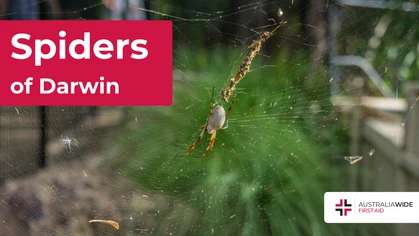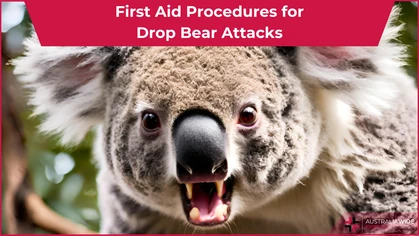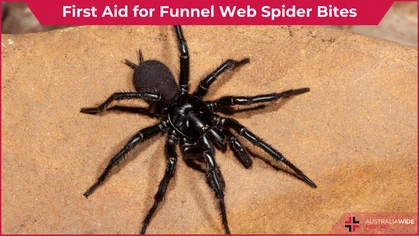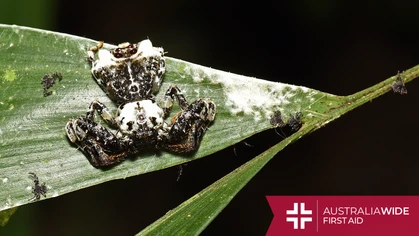A Guide to Spider Wasp Australia

Bites and Stings

Spider wasps are native to Australia. They are renowned for a painful sting that they use to paralyse and parasite large spiders. Though they are generally non-aggressive, humans are not immune to their powerful venom.
Spider wasps have one of the most powerful stings among Australia's venomous insects, as it is designed to paralyse large spider species like the Funnel-web. These long-legged insects are so named because of their nightmarish predilection for laying their eggs on spiders' bodies. The larva subsequently eats the spider after hatching. And though they are generally non-aggressive, they have been known to wield their painful venom against humans. In this article, we will help you become better acquainted with the Spider wasp and what to do if you are stung by one. We also cover spider wasp and other insect stings in our first aid courses: Head to our website to enrol at a training location near you today.Appearance
Though there are several species of spider wasps in Australia, the most commonly encountered one is the Orange spider wasp (Cryptocheilus bicolor). Orange spider wasps have the following identifying characteristics:- A black body with two orange bands on their abdomen
- An orange head, and orange antennae, legs, and wings
- Range in size from 5 - 35 mm
Looking to get you First Aid knowledge up to date?
We run certified First Aid courses throughout all major Acustralian citys. Find a location near you.
Distribution and habitat
Spider wasps are widely distributed throughout Australia in a variety of habitats, including:- Heath
- Woodlands
- Forests
- Wetlands
- Urban areas
Feeding and behaviours
Adult spider wasps actively feed on nectar during the summer months. Either before or after preparing their nest chamber, female wasps will search for spiders on tree trunks or the ground. After finding a suitable spider, they will sting and paralyse it before flying or dragging it back to their nest chamber. They will then lay a single egg on the spider's body and seal the chamber shut. Once the larva hatches, it will subsequently feed on the spider's body before pupating in a thin silky cocoon. There are a few variations to this process depending on the spider wasp. For instance, some will bite the legs off large hairy spiders to make them easier to handle. Others will not prepare a nest chamber in which to dump the spider, but will instead allow it to be eaten where it was stung. Regardless of the spider wasp, however, the spiders they target are large enough to allow the larva to complete its development on one host. As such, they often target Huntsman spiders, Golden orb spiders, and Funnel-web spiders.
Unlike bees, wasps can sting multiple times without dying. Their stings are often characterised by pain, itching, and swelling. They can also cause facial swelling, abdominal pain, and breathing difficulties in allergic casualties.
First aid for a wasp sting
To treat a wasp sting:- Calm and reassure the casualty
- Wash the sting site with soap and water to remove some of the venom
- Apply a cold compress to the sting site to reduce pain and swelling
- Apply hydrocortisone cream or calamine lotion to the sting site to further ease redness, itching, or swelling
- Monitor the casualty for signs of an allergic reaction. If they do begin experiencing a severe allergic reaction, call Triple Zero (000) for an ambulance, consult the Australian Resuscitation Council's anaphylaxis treatment guideline, follow DRSABCD, and prepare to perform CPR
Final thought
Spider wasps, of the family pompilidae, are renowned for a painful sting that they use to paralyse spiders, which they subsequently parasite with spider wasp larva. Though they do not form colonies and are generally non-aggressive, they have been known to wield their powerful venom against humans when provoked. Luckily, the symptoms of a Spider wasp sting can usually be treated with a cold compress and hydrocortisone cream. For more information about managing spider wasp and other insect stings, book one of our first aid courses: Head to the Locations page on our website to enrol in a course near you today!
Originally published at
https://www.australiawidefirstaid.com.au/resources/spider-wasp-australia
as part of the Australia Wide First Aid Articles Library









